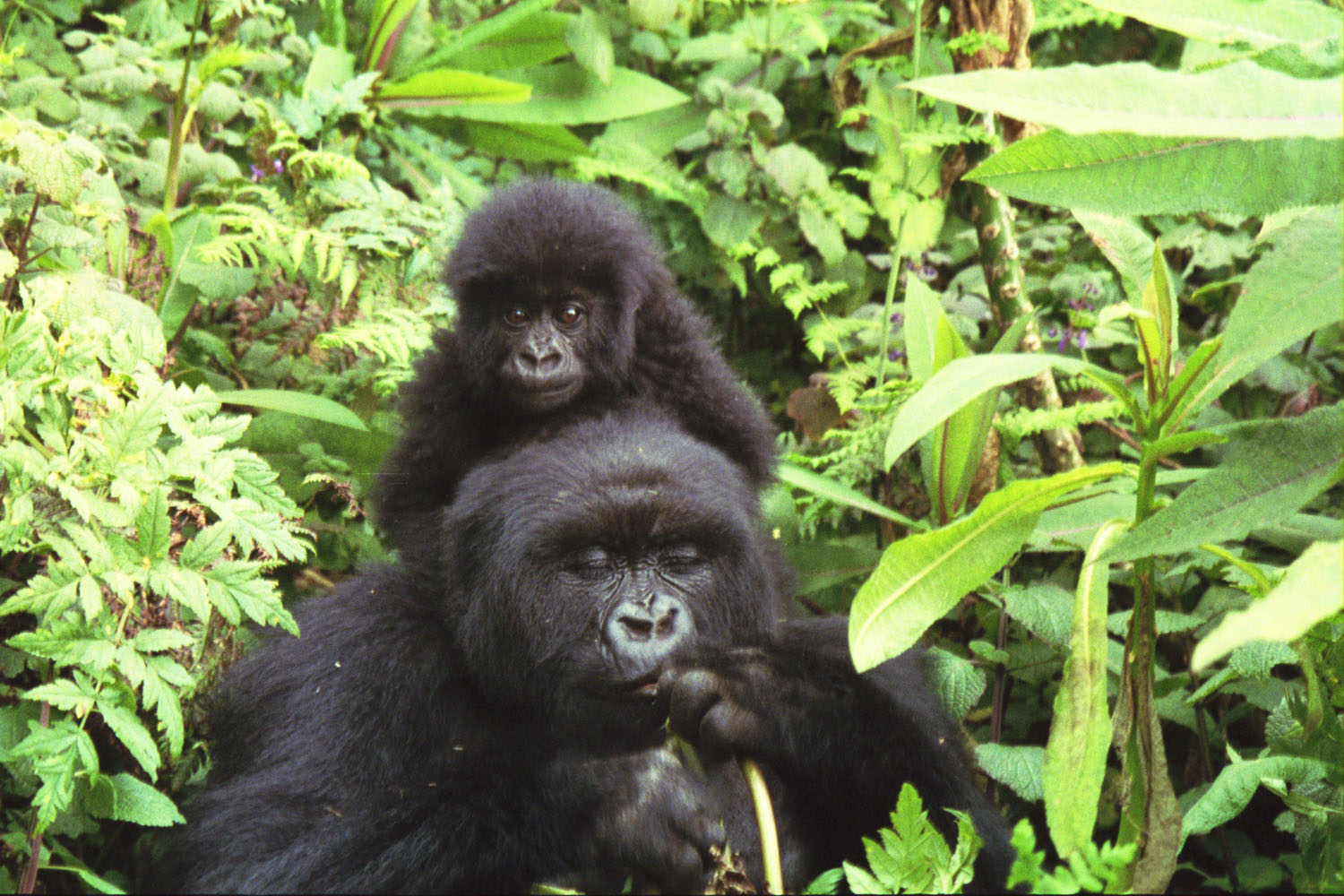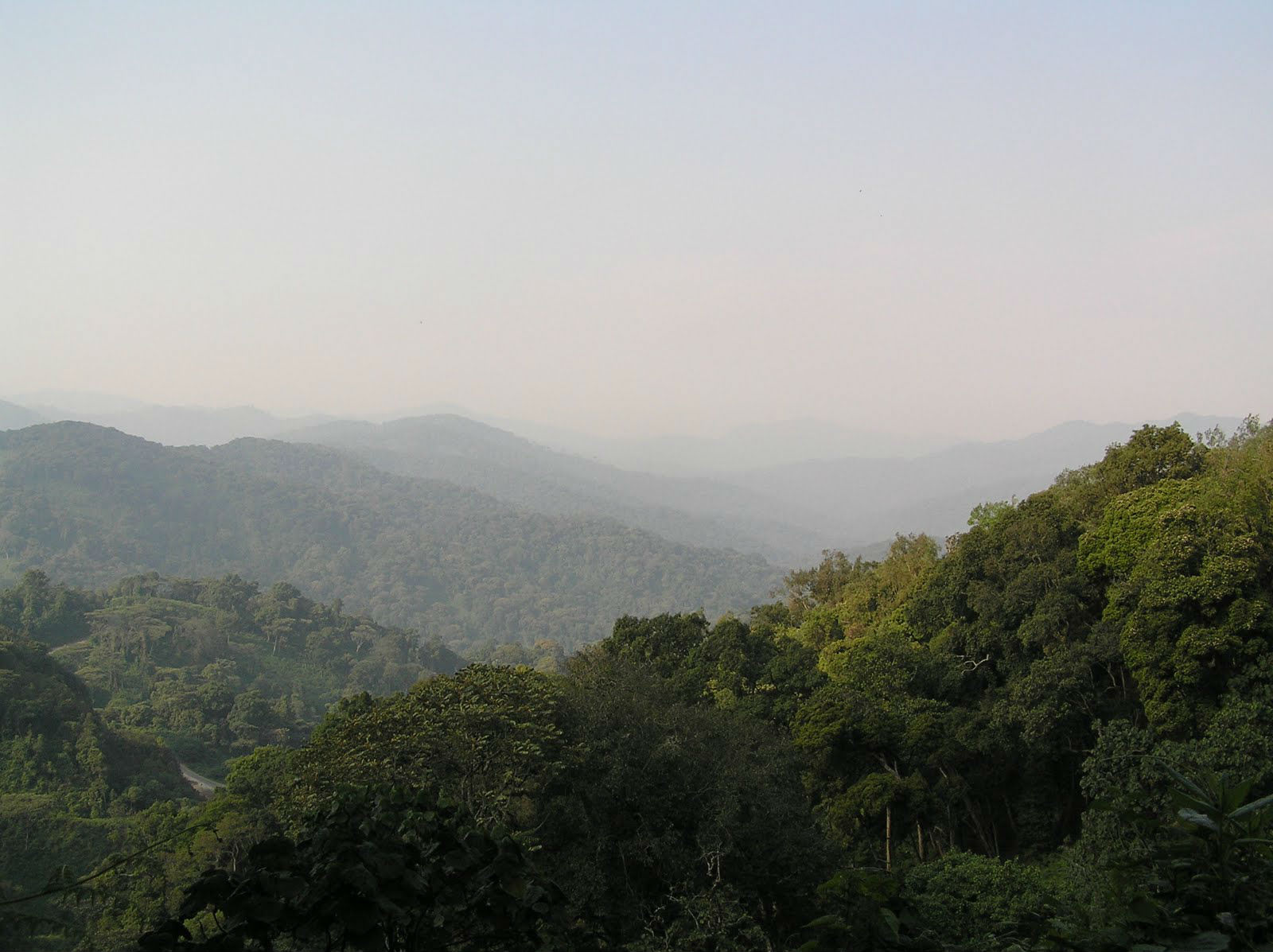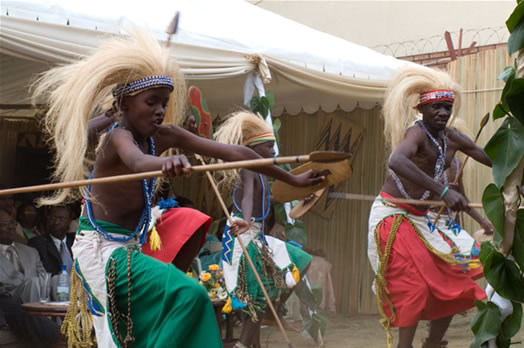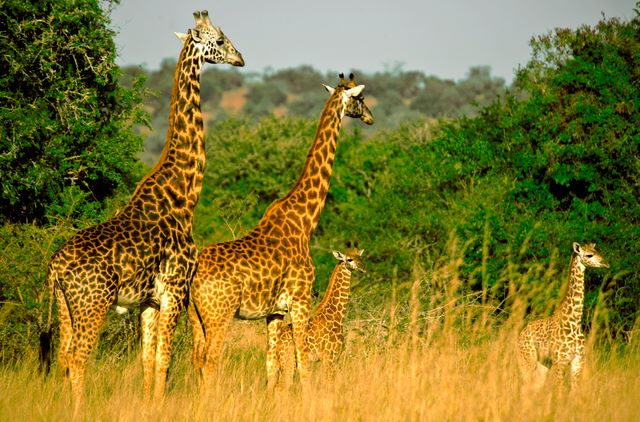
- Home
- Travel Packages
- Top Destination
-
Travel Attraction
By Category
Top Attraction

- Travel Agents
- Car Rentals
- Hotels

Parc National Des Volcans Rwanda
About Parc National Des Volcans Rwanda Parc National Des Volcans Rwanda, also known as Volcanoes National Park, is located in northwestern Rwanda and is part of the larger Virunga Conservation Area. The park is famous for being home to a population of endangered mountain gorillas, making it a popular destination for wildlife enthusiasts and nature lovers. Location and Geographical Overview Parc National Des Volcans Rwanda is situated in the Virunga Mountains, which extend across the borders of Rwanda, Uganda, and the Democratic Republic of Congo. The park covers an area of approximately 160 square kilometers and is characterized by lush rainforests, bamboo forests, and volcanic peaks. Opening and Closing Time The park is open to visitors from 7:00 am to 5:00 pm daily. It is important to note that the park may be closed during certain times of the year for conservation purposes, so it is advisable to check the official website or contact the park authorities for the most up-to-date information. Entry Fee The entry fee for Parc National Des Volcans Rwanda varies depending on the activities you wish to participate in. A standard entry fee for gorilla trekking is $1,500 per person, while other activities such as golden monkey tracking and nature walks may have different fees. It is recommended to book your activities in advance to secure your spot. Species-Flora/Fauna Availability The park is home to a diverse range of flora and fauna, including the endangered mountain gorillas, golden monkeys, buffalo, elephants, and numerous bird species. The lush vegetation of the park provides a perfect habitat for these animals, making it a haven for wildlife enthusiasts. Activities Performed Some of the activities that can be enjoyed at Parc National Des Volcans Rwanda include gorilla trekking, golden monkey tracking, nature walks, bird watching, and cultural visits to local communities. These activities offer a unique opportunity to experience the beauty and biodiversity of the park up close. Jeep Safari Charges Jeep safari charges may vary depending on the duration and route of the safari. It is recommended to inquire with local tour operators or the park authorities for the most current pricing information. Age Criterion for Male, Female, Children and Their Entry Fee There is no specific age criterion for visitors to Parc National Des Volcans Rwanda. However, children under the age of 15 must be accompanied by an adult during activities such as gorilla trekking. Entry fees for children may be discounted, so it is advisable to check with the park authorities for more information. Senior Citizen Facilities Parc National Des Volcans Rwanda strives to provide facilities for senior citizens to ensure their comfort and enjoyment during their visit. This may include assistance with transportation, accessibility to certain areas of the park, and special accommodations if needed. Best Time to Visit The best time to visit Parc National Des Volcans Rwanda is during the dry seasons, which are from June to September and December to February. During these times, the weather is pleasant, and the gorillas are easier to track. However, gorilla trekking can be done year-round, so visitors can plan their trip according to their preferences. Nearby Places to Visit There are several other attractions near Parc National Des Volcans Rwanda that visitors can explore, including Lake Kivu, Nyungwe Forest National Park, and the vibrant city of Kigali. These destinations offer a diverse range of experiences, from outdoor adventures to cultural immersion. Vehicle Parking Facility Parc National Des Volcans Rwanda provides vehicle parking facilities for visitors who arrive by car. It is recommended to park in designated areas and follow any instructions provided by the park staff to ensure the safety of your vehicle. Rules and Regulations Visitors to Parc National Des Volcans Rwanda are required to adhere to certain rules and regulations to protect the natural environment and wildlife. Some of these include maintaining a safe distance from the animals, following designated trails, and not littering. It is important to respect the guidelines set by the park authorities to ensure a memorable and responsible visit. How to Reach and Other Related Information Parc National Des Volcans Rwanda can be reached by road from the capital city of Kigali, which is approximately a 2-hour drive away. Visitors can also fly into Kigali International Airport and arrange transportation to the park. It is advisable to book accommodations in advance and plan your activities with a reputable tour operator to make the most of your visit to this incredible destination.
Explore More
About Nyungwe Forest National Park Nyungwe Forest National Park is located in northwestern Rwanda, covering an area of about 1,020 square kilometers. It is one of the oldest rainforests in Africa and is home to a diverse range of flora and fauna, making it a popular destination for nature lovers and wildlife enthusiasts. Location and Geographical Overview The Nyungwe Forest National Park is situated in the southwestern part of Rwanda, near the border with Burundi. It is located at an altitude ranging from 1,600 to 2,950 meters above sea level, with steep slopes and deep valleys creating a varied landscape. The park is known for its lush greenery, scenic waterfalls, and diverse ecosystem. Open and Closing Time The Nyungwe Forest National Park is open to visitors from 6:00 am to 6:00 pm every day. It is advisable to arrive early to make the most of your time in the park and explore its natural beauty. Entry Fee The entry fee for Nyungwe Forest National Park varies depending on the activities you plan to undertake. A standard entry fee is charged for access to the park, and additional fees may apply for guided tours, activities, and permits for specific attractions within the park. Species-Flora/Fauna Availability Nyungwe Forest National Park is home to over 1,000 plant species, including rare orchids and giant lobelias. The park is also a haven for wildlife, with over 300 bird species, 75 mammal species, and 13 primate species, such as chimpanzees and colobus monkeys, inhabiting the forest. Activities Performed Visitors to Nyungwe Forest National Park can enjoy a variety of activities, including guided nature walks, birdwatching, chimpanzee trekking, canopy walks, and hiking trails. The park offers a range of experiences for nature enthusiasts and adventure seekers. Jeep Safari Charges Jeep safari charges may vary depending on the tour operator and the specific itinerary chosen. It is recommended to book jeep safaris in advance to secure your spot and ensure a memorable wildlife viewing experience in Nyungwe Forest National Park. Age Criterion and Entry Fee Entry fees for Nyungwe Forest National Park may vary based on age groups. Children and senior citizens may be eligible for discounted rates or free entry, while adults may be required to pay the standard entry fee. It is advisable to check the official website or contact the park authorities for the latest information on entry fees and age criteria. Senior Citizen Facilities Nyungwe Forest National Park offers facilities and services to accommodate senior citizens and visitors with special needs. These may include accessible trails, designated viewing areas, and assistance from park staff for a comfortable and enjoyable experience in the forest. Best Time to Visit The best time to visit Nyungwe Forest National Park is during the dry season, which typically runs from June to September and December to February. These months offer favorable weather conditions for outdoor activities and wildlife sightings, making it an ideal time to explore the park. Nearby Places to Visit There are several nearby attractions and points of interest for visitors to explore after their visit to Nyungwe Forest National Park. These may include Lake Kivu, the ancient Nyungwe king's palace, tea plantations, and cultural heritage sites in the surrounding region. Vehicle Parking Facility Nyungwe Forest National Park offers vehicle parking facilities for visitors at designated parking areas near the park entrance. It is recommended to follow the instructions provided by park staff and secure your vehicle properly to ensure a hassle-free visit to the forest. Rules and Regulations Visitors to Nyungwe Forest National Park are required to adhere to certain rules and regulations to protect the natural environment and wildlife within the park. These may include restrictions on littering, noise levels, wildlife interaction, and off-trail hiking to preserve the beauty and biodiversity of the forest. How to Reach and Other Related Information Nyungwe Forest National Park can be easily reached by road from major cities in Rwanda, such as Kigali and Cyangugu. Visitors can travel by public or private transportation to the park entrance, where they can register, pay entrance fees, and receive information on guided tours and activities available in the forest. For more information on Nyungwe Forest National Park, including accommodation options, tour packages, and booking inquiries, visitors can contact the park authorities or visit the official website for updated details on visiting the park and exploring its natural wonders.
Explore More
About National Museum Of Butare The National Museum of Butare, also known as the Rwandan National Museum, is located in the town of Butare in Rwanda. It is one of the largest museums in East Africa and offers visitors a unique opportunity to learn about the history, culture, and natural heritage of Rwanda. Location and Geographical Overview The museum is situated in the southern part of Rwanda, in the Huye District. It is easily accessible by road and is located in a picturesque setting surrounded by lush greenery. Open and Closing Time The National Museum of Butare is open to visitors from 9:00 am to 5:00 pm every day of the week, including weekends. It is closed on public holidays. Entry Free There is an entry fee to visit the museum, which varies for different categories of visitors. More information on entry fees can be obtained at the museum's entrance. Species-Flora/Fauna Availability The museum showcases a wide variety of flora and fauna native to Rwanda, including preserved specimens of plants and animals. Visitors can learn about the country's biodiversity and conservation efforts. Activities Performed Visitors to the National Museum of Butare can participate in guided tours, educational programs, cultural performances, and interactive exhibits. There are also workshops and events held regularly at the museum. Jeep Safari Charges The museum offers jeep safari tours for visitors who want to explore the surrounding area and see wildlife in their natural habitat. The charges for jeep safaris can be obtained at the museum's information desk. Age Criterion for Male, Female, Children and their Entry Fee The museum may have different entry fees based on age and gender. Children under a certain age may be allowed free entry while adults may have to pay a fee. It's best to check with the museum for specific details. Senior Citizen Facilities The National Museum of Butare provides facilities for senior citizens, such as wheelchair access, rest areas, and priority seating during tours and events. Special discounts may also be available for senior visitors. Best Time to Visit The best time to visit the National Museum of Butare is during the dry season, which lasts from June to September. The weather is pleasant during this time, and wildlife sightings are more likely. Nearby Places to Visit There are several interesting attractions near the museum, such as the Butare University, Nyanza Palace, Nyungwe National Park, and Murambi Genocide Memorial. Visitors can explore these sites to learn more about Rwanda's history and culture. Vehicle Parking Facility The museum offers a vehicle parking facility for visitors who arrive by car. There is ample space available for parking, and security personnel are on-site to ensure the safety of parked vehicles. Rules and Regulations Visitors to the National Museum of Butare are expected to follow certain rules and regulations to ensure a safe and enjoyable experience for everyone. Some common rules include not littering, respecting wildlife, and following the instructions of museum staff. How to Reach and Other Related Information The National Museum of Butare is easily accessible by road from Kigali, Rwanda's capital city. Visitors can also take a bus or taxi to reach the museum. More information on transportation options and directions can be obtained from the museum's website or staff. Overall, a visit to the National Museum of Butare is a fascinating and educational experience that offers insights into Rwanda's rich cultural heritage and natural beauty. Whether you're interested in history, wildlife, or local traditions, the museum has something for everyone to enjoy.
Explore More
About Akagera National Park Rwanda Akagera National Park is located in eastern Rwanda, along the border with Tanzania. The park covers an area of 1,200 square kilometers and is named after the Akagera River that flows through it. Established in 1934, it is one of the oldest national parks in Africa and is known for its diverse wildlife and scenic landscapes. Location and Geographical Overview The park is situated in the eastern part of Rwanda, approximately a 2-hour drive from Kigali, the capital city. It is bordered by Tanzania to the east and is part of the larger Akagera ecosystem, which includes lakes, wetlands, and savannah plains. The diverse habitats within the park support a wide variety of flora and fauna. Opening and Closing Time The park is open daily from 7:00 am to 6:00 pm, with the last entry allowed at 3:00 pm. Visitors are required to adhere to these timings for their own safety and to minimize disturbances to the wildlife. Entry Fee The entry fee for Akagera National Park varies depending on whether you are a Rwandan citizen, resident, or foreign tourist. Rwandan citizens and residents enjoy discounted rates, while foreign tourists are charged a standard fee. It is advisable to check the official website for the most up-to-date entry fees. Species-Flora/Fauna Availability Akagera National Park is home to a wide range of wildlife, including elephants, giraffes, zebras, hippos, crocodiles, and various antelope species. The park also boasts over 500 bird species, making it a paradise for birdwatchers. The diverse flora includes acacia trees, papyrus swamps, and open grasslands. Activities Performed Visitors to Akagera National Park can partake in a variety of activities, including game drives, bird watching, boat cruises on Lake Ihema, nature walks, and guided tours. The park offers something for everyone, from wildlife enthusiasts to nature lovers. Jeep Safari Charges Jeep safari charges in Akagera National Park are separate from the entry fee and may vary depending on the duration and type of safari. It is recommended to book safaris in advance to secure your spot and to ensure a memorable wildlife viewing experience. Age Criterion and Entry Fee There may be age criteria for entry into the park, with discounted rates available for children, students, and senior citizens. It is advisable to check the official website or inquire with park authorities for specific information on age criteria and entry fees. Senior Citizen Facilities Akagera National Park may offer special facilities for senior citizens, such as designated viewing areas, accessible pathways, and discounted rates. Elderly visitors can enjoy the park's beauty and wildlife in comfort and convenience. Best Time to Visit The best time to visit Akagera National Park is during the dry season, from June to September, when wildlife congregates around water sources and vegetation is less dense. The park is also less crowded during this time, allowing for a more intimate safari experience. Nearby Places to Visit There are several nearby attractions that visitors can explore while visiting Akagera National Park, such as Lake Rwanyakazinga, Mutumba Hills, and Imigongo Cultural Centre. These sites offer additional opportunities for sightseeing and cultural experiences. Vehicle Parking Facility Akagera National Park provides ample parking facilities for visitors, with designated parking areas at various points of interest within the park. Visitors are advised to follow parking guidelines and secure their vehicles to prevent any incidents. Rules and Regulations Visitors to Akagera National Park are expected to adhere to certain rules and regulations to ensure the safety of themselves, other visitors, and the wildlife. These may include guidelines on speed limits, noise levels, waste disposal, and wildlife interactions. It is important to respect the park's rules for a harmonious and enjoyable experience. How to Reach and Other Related Information Akagera National Park is easily accessible by road from Kigali, with well-maintained highways leading to the park entrance. Visitors can also opt for guided tours or private transport services for a hassle-free journey. It is advisable to plan your trip in advance and gather relevant information on accommodation, dining options, and tour operators for a smooth visit to the park. Overall, Akagera National Park offers a unique safari experience in Rwanda, with its diverse wildlife, stunning landscapes, and rich biodiversity. Whether you're a nature enthusiast, a wildlife lover, or a photography buff, the park has something for everyone. Plan your visit to Akagera National Park and immerse yourself in the beauty of Rwanda's wilderness.
Explore More
Volcanoes National Park, located in northwestern Rwanda, is one of Africa's most famous and stunning natural wonders. Spanning over 160 square kilometers, it is part of the larger Virunga Conservation Area, which also includes parts of Uganda and the Democratic Republic of Congo. The park is renowned for its breathtaking volcanic landscapes, lush montane forests, and, most notably, the population of endangered mountain gorillas that inhabit the region. In addition to the gorillas, Volcanoes National Park is home to an incredible variety of wildlife, including golden monkeys, forest elephants, and various bird species. The park’s dramatic scenery, featuring five volcanic mountains (Visoke, Karisimbi, Muhabura, Gahinga, and Sabyinyo), offers a unique trekking experience that attracts visitors from around the world. It is one of the most sought-after destinations for wildlife enthusiasts, adventure seekers, and eco-tourists. How to Reach Volcanoes National Park, Northwestern Rwanda Reaching Volcanoes National Park is relatively straightforward, but it does require some travel. The closest city to the park is Kigali, the capital of Rwanda, which serves as the main entry point for visitors. By Air: Kigali International Airport (KGL) is the nearest international airport to the park. From the airport, you can take a taxi, private car, or even a domestic flight to reach the park. The drive from Kigali to Volcanoes National Park takes approximately 2 to 3 hours, covering a distance of around 100 kilometers (62 miles). By Road: The most common way to reach the park is by road from Kigali. There are several tour companies that offer transport services to and from the park. The road is generally well-paved, though it can be winding and hilly in certain sections. By Trekking: For the adventurous, there are options to hike from nearby towns, though this requires a high level of physical fitness and preparation. Weather in Volcanoes National Park The climate of Volcanoes National Park is typically temperate, thanks to its high elevation. It has two distinct seasons: the wet season and the dry season. Wet Season: The wet season lasts from March to May and from October to November. During these months, the park experiences heavy rainfall, which can make hiking and trekking more challenging but also brings lush greenery to the region. Dry Season: The dry season, from June to September and December to February, is the best time to visit. The weather is cooler, and there is less rain, making it easier for hiking and gorilla trekking. Temperatures in the park typically range between 10°C (50°F) and 20°C (68°F), but it can feel colder at higher elevations, particularly when trekking in the mountains. Timing for Visiting Volcanoes National Park The park is open year-round, but the best time to visit is during the dry season, which is typically from June to September and December to February. These months offer optimal trekking conditions and higher chances of encountering gorillas in the wild. If you're planning to trek to see the mountain gorillas, it’s advisable to book your permits in advance, as the number of visitors allowed to trek gorillas each day is limited to protect the endangered species. Why Volcanoes National Park is Famous? Volcanoes National Park is famous primarily for being one of the few places in the world where you can see endangered mountain gorillas in their natural habitat. The park is home to around half of the world's population of mountain gorillas, making it a top destination for wildlife enthusiasts and conservationists. In addition to the gorillas, the park is famous for its scenic landscapes, which include misty mountain slopes, bamboo forests, and volcanic peaks. It is also known for its significant role in gorilla conservation, led by the late Dian Fossey, a primatologist who spent years researching and protecting gorillas in the park. Her efforts were crucial in the survival of the species, and today, Volcanoes National Park continues to play a key role in the protection of mountain gorillas. Entry and Visit Details About Volcanoes National Park Visiting Volcanoes National Park requires purchasing a permit, particularly if you are interested in trekking to see the mountain gorillas. The cost of a gorilla trekking permit is high, but the funds go towards conservation efforts, benefiting both the gorillas and local communities. Gorilla Trekking Permits: As of 2023, the cost for a gorilla trekking permit in Rwanda is USD $1,500 per person per trek. These permits are issued by the Rwanda Development Board (RDB) and are limited in number, with only a specific number of permits available each day for each gorilla group. Other Activities: In addition to gorilla trekking, visitors can participate in activities such as hiking the park’s volcanic peaks, visiting the Dian Fossey Gorilla Fund International’s research center, or exploring the park’s rich biodiversity on guided nature walks. Opening Hours: The park is open every day of the week from 7:00 AM to 6:00 PM. However, for gorilla trekking, it’s best to arrive early in the morning, as the treks typically start around 8:00 AM. History and Architecture of Volcanoes National Park Volcanoes National Park was established in 1925 as Rwanda's first national park, initially created to protect the mountain gorillas. The park's history is intertwined with the conservation efforts that have been essential to the survival of the gorillas. Dian Fossey's groundbreaking work in the 1960s and 1970s led to the development of anti-poaching measures, and the park remains a key player in global efforts to protect endangered species. The park itself is known for its natural beauty rather than man-made structures. The architecture of the park is largely centered around its visitor facilities, which include a research center, lodging options, and park offices. However, the true "architecture" of Volcanoes National Park lies in its stunning natural features: the towering volcanic mountains, lush rainforests, and diverse ecosystems. Things to Do at Volcanoes National Park Gorilla Trekking: The primary activity in the park, where you can hike through the forests and mountains to observe mountain gorillas in their natural habitat. Golden Monkey Trekking: A less-known but equally rewarding experience where you can track the endangered golden monkeys in the bamboo forests. Hiking the Volcanic Peaks: The park has several volcanoes, including Karisimbi and Visoke, which offer challenging hikes with stunning views at the summit. Dian Fossey’s Grave and Research Center: Visit the site where the famed primatologist Dian Fossey is buried and learn about her contributions to gorilla conservation. Bird Watching: Volcanoes National Park is home to several species of birds, making it a great spot for bird watchers. Interesting Facts About Volcanoes National Park Volcanoes National Park is one of the most visited national parks in Africa, primarily due to its famous gorilla trekking opportunities. The park is home to over 400 mountain gorillas, nearly half of the world's total population. In addition to gorillas, the park also supports a variety of other wildlife, including golden monkeys, buffaloes, and forest elephants. Rwanda’s tourism revenue, largely driven by gorilla trekking, has played a significant role in the country’s economic development. Volcanoes National Park shares borders with Uganda and the Democratic Republic of Congo, forming part of the Virunga Conservation Area. Tips for Visiting Volcanoes National Park Book Your Permit Early: Gorilla trekking permits are in high demand, so it’s crucial to book well in advance, especially during peak season. Prepare for Physical Activity: Trekking to see the gorillas can be physically demanding, so be sure to wear comfortable shoes and be prepared for steep and muddy trails. Bring Layers: The weather can change rapidly, especially in the higher altitudes. Bring layers, including a waterproof jacket and warm clothes for chilly mornings. Respect the Gorillas: When trekking with gorillas, it’s important to follow the guidelines provided by your guides to ensure both your safety and the gorillas’ well-being. Support Local Communities: Many of the park’s tour operators work closely with local communities. Consider purchasing locally made handicrafts to support these communities.
Explore More